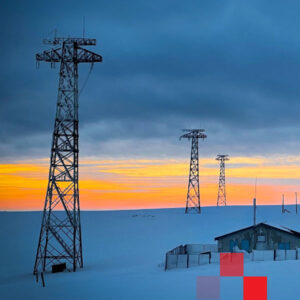Why Polar Science Needs Blackout-Proof Fiber?
Arctic science lives on the edge of human endurance. Research stations run on rationed diesel, rely on short resupply windows, and face six months of darkness where no plane or truck can reach them. Networks carry everything—climate sensor data, satellite uplinks, safety systems—yet the power grid disappears for weeks at a time.
The question is simple: how do you keep critical links alive when the generators cut off?
The answer lies in blackout-proof fiber infrastructure. Remote-managed robotic fiber switching platforms hold optical paths without power, draw only a few watts in idle, and restart instantly when the lights come back. They allow polar engineers to wire once, then automate months of operations—even during extended blackouts.
The Arctic Problem in Numbers
- Blackouts last months when fuel or sunlight is scarce.
- No manual patching is possible in minus-40 storms.
- Every mistake counts: a missed link could cut off safety communications or sensor data.
These conditions demand a system that doesn’t depend on constant power or on-site staff.

Design Goal: Keep Paths Latched Through the Dark
At the heart of blackout-proof design is a passively latched optical matrix. Once a fiber path is set, it physically stays in place with no holding power required. That means traffic continues to flow—even when every watt is shut down.
Equally important, the switch works at Layer 0 only. It passes light without touching packets, ensuring security and simplicity. Engineers call this “packet-blind,” and it aligns with the zero-trust standards now shaping critical infrastructure.
How the Platform Delivers
- Power Profile Built for Long Blackouts
- Power is consumed only while switching.
- Idle draw is about 6 watts, with a deep sleep of 0.1–0.5 W in outdoor mode.
- A built-in super-capacitor UPS ensures that if a switch is mid-cycle when power fails, it finishes cleanly.
- Survive the Cold in Sealed Housings
- Our CSOS units operate from –40 °C to +65 °C, enabling use in sealed, lightly heated outdoor enclosures.
- Optical Integrity in Harsh Sites
- Connectorized field values hold at ≤1.0 dB insertion loss and >55 dB return loss with UPC connectors.
- Speed When It Matters
- A robotic cross-connect completes in 24–60 seconds.
Together, these features let operators plan weeks of uptime on battery power alone.
Reference Architectures for Polar Sites
Permafrost Sensor Huts
Compact outdoor switches mount in sealed boxes near sensor arrays. They sit in deep sleep overnight, wake only to reroute a spur if the primary fiber gets damaged, and consume less than a lightbulb.
Station Core Any-to-Any
Larger matrices live in the main lab’s meet-me room, routing instruments, safety systems, and satellite uplinks. Passive latching keeps live traffic running during generator transfers.
Rack-Scale Expansion
When labs need thousands of fibers managed in one room, back-to-back units scale to over 10,000 fibers per rack, while still retaining the same low-power, latched behavior.
Remote Operations During Blackout Season
- Management plane: Web GUI, REST, and SNMPv2/v3 are standard. SSH and Telnet remain for internal support only.
- Audit control: Every action is logged, and role-based authentication can integrate with RADIUS, TACACS+, or LDAP.
- Safety checks: Operators often enforce a “four-eyes” policy—two people must approve critical moves.
- Diagnostics: Instead of built-in RFTS, external OTDR and network management systems provide fiber test data.
This approach keeps the platform simple, secure, and easy to certify for government or academic projects.
Deployment Checklist for Arctic Sites
- Use OSP-rated enclosures with heater pads.
- Budget 6 W idle per node, with brief peaks near 50 W during a switch.
- Plan for ≤1.0 dB optical insertion loss per path.
- Connect management ports to an out-of-band Ethernet, secured by HTTPS or SNMPv3.
Outcomes You Can Count On
- Continuity: Power drops don’t drop links. Paths stay latched and traffic flows.
- Autonomy: Switch paths in under a minute from base, without sending a crew outside.
- Efficiency: Run weeks on battery at 6 W idle, and much longer when in sleep mode.
- Auditability: Every move is logged, creating an immutable trail for grants, compliance, and safety reviews.
Why This Matters
In the Arctic, communications are more than convenience—they are survival. Researchers depend on sensors for weather, climate, and safety data. Outages can jeopardize science projects worth millions or put lives at risk.
Blackout-proof fiber switching offers a practical way to guarantee continuity. By consuming almost no power, surviving the cold, and holding traffic steady without electricity, these systems provide the backbone for modern polar research.
Book Demo
Plan your polar network winterization. Book a technical workshop to review power budgets, outdoor enclosures, and Layer 0 automation strategies tailored for blackout-season research.

